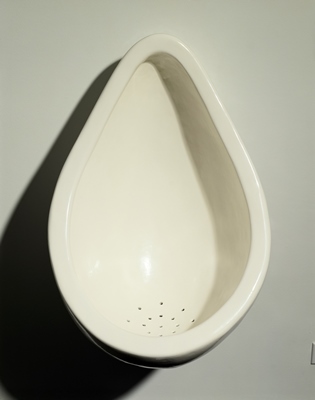SAM Art: When is a urinal not just a urinal?

Urinal, 1984, Robert Gober, American, born 1954, wood, wire, plaster and enamel paint, 30 x 20 x 20 in., Gift of the Virginia and Bagley Wright Collection, in honor of the 75th Anniversary of the Seattle Art Museum, 2014.25.24, © Robert Gober. Currently on view in the modern and contemporary art galleries, third floor, Seattle Art Museum.
In 1917 Marcel Duchamp, using the fictitious name “R. Mutt,” submitted Fountain—a factory-made men’s urinal—to the first exhibition of the American Society of Independent Artists. After heated discussion, the work was rejected from the exhibition. But the event, with Duchamp’s brash challenge to basic assumptions about art, reverberated through the 20th century and beyond. At the most basic level, the artist asked what makes a work of art? Duchamp asserted that the artistic concept was more important than traditional notions of skill, craft or beauty.
As opposed to the found fixture of Fountain, Robert Gober’s Urinal is hand-made. With this action, he turns Duchamp’s object back into a sculpture, a psychologically suggestive form suggestive of a human body.